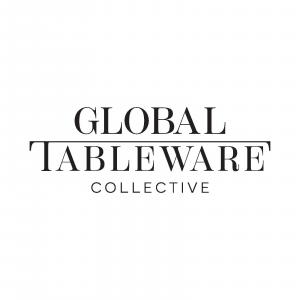The sewing machine market size is projected to reach $6,509.8 million by 2027, growing at a CAGR of 6.10% from 2021 to 2027.
— Allied Market Research
WILMINGTON, DE, UNITED STATES, September 7, 2024 /EINPresswire.com/ — Introduction
The global sewing machine market plays a pivotal role in multiple industries, from apparel and textiles to upholstery, automotive, and even home DIY projects. With technological advancements, the market has diversified significantly, catering to both industrial and domestic needs. As the demand for personalized fashion, automation, and efficient production processes increases, the sewing machine industry is undergoing notable transformations. This article explores the current trends, growth drivers, challenges, and the future outlook for the sewing machine market.
Market Overview
The sewing machine market size was valued at $4,975.2 million in 2019, and is projected to reach $6,509.8 million by 2027, growing at a CAGR of 6.10% from 2021 to 2027. Growth is driven by the expansion of the textile and apparel industries, advancements in automation, and the increasing popularity of sewing as a hobby. The rise of e-commerce has also led to increased demand for sewing machines, as small businesses and individuals engage in personalized or custom clothing production.
📚 𝐃𝐨𝐧’𝐭 𝐦𝐢𝐬𝐬 𝐨𝐮𝐭 𝐨𝐧 𝐲𝐨𝐮𝐫 𝐒𝐚𝐦𝐩𝐥𝐞 𝐂𝐨𝐩𝐲: https://www.alliedmarketresearch.com/request-sample/A11452
Key Trends and Drivers
Rising Demand for Apparel and Textiles The apparel and textile industry is one of the largest consumers of sewing machines, and as the global demand for clothing grows, particularly in emerging markets like Asia-Pacific, Africa, and Latin America, so does the need for high-quality, efficient sewing machines. Fast fashion, coupled with the rise of e-commerce platforms, has increased the need for industrial sewing machines capable of high-speed production with precision.
Advancements in Automation and Technology Automation is revolutionizing the sewing machine industry. The demand for computerized sewing machines has grown significantly, particularly in industrial settings, where precision and efficiency are essential. Features like automatic threading, digital stitch selection, and programmable patterns reduce labor costs and time, allowing companies to streamline production processes. In addition, smart sewing machines are increasingly equipped with connectivity options, enabling manufacturers to integrate them into the broader Industry 4.0 ecosystem.
Customization and DIY Culture In recent years, there has been a resurgence in home sewing, spurred by the DIY movement and the desire for customized, sustainable fashion. As more people seek to create their own garments, home decor, or accessories, the demand for domestic sewing machines has surged. Brands are catering to this market by offering portable, user-friendly, and feature-rich sewing machines that allow for creativity and personalization.
Sustainability and Circular Fashion The shift toward sustainable fashion is driving innovations in sewing technology. With increasing concerns about textile waste, consumers and companies are turning to sewing machines as a tool for upcycling, mending, and creating sustainable products. Sewing machines, both industrial and domestic, are crucial to reducing waste in the fashion industry, as they enable repair and alteration of garments, extending the life of clothing.
Small Business Growth and Entrepreneurship The rise of small businesses and independent designers has created a new market for semi-industrial and domestic sewing machines. Entrepreneurs are investing in machines that offer versatility, durability, and ease of use for custom clothing lines, alterations, or home-based production. The global trend toward micro-enterprises in fashion and textiles is expected to sustain this demand.
Challenges in the Market
High Initial Investment for Industrial Machines Industrial sewing machines, which are essential for mass production in textile and apparel factories, require significant capital investment. For small businesses or startups, the cost of high-end, automated machines may be a barrier to entry. This is especially true in developing countries where access to financing can be limited.
Skilled Labor Shortage The transition toward more automated and computerized machines has created a demand for skilled operators. However, there is a shortage of workers proficient in operating these advanced machines. This skills gap is particularly pronounced in regions where sewing is a traditional craft but where training in modern technologies is lacking.
Supply Chain Disruptions The sewing machine market, like many industries, faces supply chain disruptions due to global crises, such as the COVID-19 pandemic. These disruptions affect the availability of raw materials and components, which can increase production costs and delay delivery times. Manufacturers are increasingly investing in localized production to mitigate these risks.
Market Segmentation
By Type
Industrial Sewing Machines: Designed for heavy-duty use, these machines are capable of continuous operation and are used in factories for large-scale production. They include specialized machines for tasks such as embroidery, quilting, and overlocking.
Domestic Sewing Machines: These are designed for home use and range from basic mechanical machines to computerized models with advanced features. They are popular among hobbyists and DIY enthusiasts.
By Operation
Manual Sewing Machines: These machines are operated manually without any electronic or automated features. They are generally used in low-production settings.
Electronic Sewing Machines: These are equipped with motorized systems and provide a wide range of stitch options, automatic functions, and programmable patterns.
Computerized Sewing Machines: These are advanced machines integrated with computer technology, offering precise control and automation for various sewing tasks.
Regional Insights
The Asia-Pacific region is the largest market for sewing machines, accounting for a significant share of the global market. Countries like China, India, Bangladesh, and Vietnam have a strong manufacturing base for apparel and textiles, driving the demand for industrial machines. North America and Europe are also key markets, with a growing interest in home sewing and customization.
In Latin America and Africa, the sewing machine market is gaining traction as local textile industries expand, and entrepreneurship becomes more prominent.
𝐒𝐩𝐞𝐚𝐤 𝐭𝐨 𝐎𝐮𝐫 𝐀𝐧𝐚𝐥𝐲𝐬𝐭 @ https://www.alliedmarketresearch.com/connect-to-analyst/A11452
Future Outlook
The future of the sewing machine market is closely tied to advancements in technology and sustainability. As the demand for customized and eco-friendly products grows, sewing machine manufacturers will need to innovate to meet these needs. The rise of automated and computerized machines will continue to transform industrial sewing processes, while the DIY culture will sustain demand for user-friendly domestic models.
Conclusion
The global sewing machine market is poised for steady growth, driven by expanding textile industries, advancements in automation, and rising interest in sustainable fashion. Manufacturers that invest in technological innovation and cater to both industrial and domestic needs will thrive in this evolving market. As sewing becomes more accessible to both large-scale producers and individuals, the industry will play a crucial role in shaping the future of fashion, textiles, and beyond.
𝐒𝐢𝐦𝐢𝐥𝐚𝐫 𝐑𝐞𝐩𝐨𝐫𝐭𝐬 𝐢𝐧 𝐂𝐨𝐧𝐬𝐮𝐦𝐞𝐫 𝐆𝐨𝐨𝐝𝐬 𝐈𝐧𝐝𝐮𝐬𝐭𝐫𝐲
𝐁𝐚𝐭𝐡𝐫𝐨𝐨𝐦 𝐕𝐚𝐧𝐢𝐭𝐢𝐞𝐬 𝐌𝐚𝐫𝐤𝐞𝐭 https://www.alliedmarketresearch.com/bathroom-vanities-market-A09416
𝐏𝐨𝐨𝐥 𝐓𝐚𝐛𝐥𝐞𝐬 𝐌𝐚𝐫𝐤𝐞𝐭 https://www.alliedmarketresearch.com/pool-tables-market-A11277
David Correa
Allied Market Research
+1 800-792-5285
email us here
Visit us on social media:
Facebook
X
Legal Disclaimer:
EIN Presswire provides this news content “as is” without warranty of any kind. We do not accept any responsibility or liability
for the accuracy, content, images, videos, licenses, completeness, legality, or reliability of the information contained in this
article. If you have any complaints or copyright issues related to this article, kindly contact the author above.
![]()
Article originally published on www.einpresswire.com as Expected to Grow at a CAGR of 6.1% by 2027, Claims AMR













